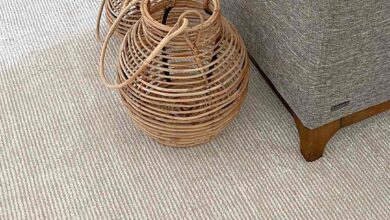Catherine the Great Furniture: Imperial Elegance and Neoclassical Power

Catherine the Great, Empress of Russia from 1762 to 1796, wasn’t just a powerful ruler—she was a tastemaker, art patron, and one of the most influential figures in shaping the decorative arts of the 18th century. Among her enduring legacies is a unique style of furniture design that blends grandeur, intellect, and aesthetic finesse. Today, Catherine the Great furniture remains a subject of fascination for collectors, historians, and interior designers alike. In this article, we’ll dive deep into the world of Catherine the Great’s furniture—its styles, materials, cultural influences, where you can see it today, and how it has shaped European design heritage.
Who Was Catherine the Great?
Catherine II, better known as Catherine the Great, was the longest-ruling female leader of Russia. Although originally born in Prussia (modern-day Poland), she became a member of Russian royalty through marriage. Eventually, she ascended to the throne after a coup against her husband, Peter III.
While political and military achievements mark her reign, Catherine also ushered in a Golden Age of art, literature, architecture, and interior design. One of her most personal interests was decorating her royal residences with furniture that reflected European elegance and Russian identity.
Her Vision for Russian Art and Furniture
Catherine saw the arts as a way to both civilize and glorify the Russian Empire. She was heavily inspired by French neoclassicism and the Enlightenment, and she aimed to infuse her palaces with the cultural language of power, intellect, and order.
Her goal was not just to impress but to educate and elevate—to use the visual language of art and furniture to show that Russia could stand shoulder-to-shoulder with France, England, and the Holy Roman Empire.
Defining Characteristics of Catherine the Great Furniture
Let’s explore what makes Catherine the Great’s furniture so recognizable and admired.
Neoclassical Foundation
Her furniture drew deeply from neoclassical architecture—with columns, symmetry, and Greco-Roman motifs such as laurel wreaths, eagles, and mythological figures.
French Rococo Influence
Though Catherine disliked the excessive frivolity of Rococo, she appreciated its delicate details. Some earlier pieces during her reign reflect this French influence with:
- Curved legs and arms
- Painted floral motifs
- Light pastel color schemes
Ornate Gilding and Ormolu
Gilded bronze, known as ormolu, was frequently used to decorate furniture edges, legs, and handles. The combination of dark woods with bright golden tones was a signature of imperial grandeur.
Mechanical Marvels
Catherine had a fascination with mechanical furniture, including secret compartments, rotating tops, and self-closing drawers. German cabinetmakers, particularly David Roentgen, often crafted these.
Rich Materials
Furniture pieces commissioned by Catherine were crafted with:
- Mahogany
- Ebony
- Walnut
- Marble tops
- Porcelain inlays
- Velvet and silk upholstery
Famous Artisans and Craftsmen She Employed
Catherine didn’t rely solely on Russian furniture makers. She imported and commissioned some of the most incredible European artisans of her day.
| Artisan Name | Nationality | Specialty |
|---|
| David Roentgen | German | Ingenious mechanical desks and cabinets |
| Jean-Henri Riesener | French | Louis XVI-style commodes and writing tables |
| Andrei Voronikhin | Russian | Early neoclassical interior designer |
| Charles Cameron | Scottish | Designed many palace interiors in neoclassical style |
These artisans played a crucial role in creating a distinctive synthesis of Western European and Russian styles, which later became a defining characteristic of Russian imperial decor.
Iconic Palaces and Collections
Catherine’s taste was reflected in her residences and royal chambers, many of which still exist today as museums.
The Hermitage Museum (St. Petersburg)
Founded by Catherine herself, this museum began as a personal collection. Its interiors are filled with original furniture from her reign, showcasing French, German, and Russian influences.
Catherine Palace (Tsarskoye Selo)
This was her summer residence, filled with lavishly furnished halls, gilded chairs, and intricate mechanical desks. Highlights include the Arabesque Room, Green Dining Room, and Chinese Blue Room.
Pavlovsk Palace
Initially built for her son, the palace contains many late-Catherine-period furnishings, reflecting the transition toward more restrained classicism.
Modern Market and Collectibility
Authentic Catherine the Great furniture pieces are scarce and highly valuable.
Auction Prices:
- Desks by David Roentgen: $1–3 million+
- Gilded commodes or cabinets: $250,000+
- Period replicas or museum-quality reproductions: $10,000–$50,000
Buyers:
- Museums (e.g., The Met, The Getty, The Hermitage)
- High-end private collectors
- Royal and state heritage preservation programs
Even replicas crafted in the same style (especially French neoclassical pieces) are in demand for luxury interior design projects, vintage home decor, and historical re-creations.
Catherine the Great’s Lasting Influence on Interior Design
Catherine’s reign permanently transformed Russian interior design. Her adoption of neoclassicism reshaped not only furniture but entire aesthetic and architectural ideals. The idea that furniture should express philosophy—order, rationality, refinement—originated under her rule.
In modern times, her design philosophy is reflected in:
- Contemporary neoclassical interiors
- Luxury hotel decor in Russia and Europe
- Modern mechanical desk designs
- Custom-made royal-style beds and armoires
Where to See Catherine the Great Furniture Today
If you’re an enthusiast or a history buff, there are several places around the world where you can see original pieces or replica collections:
The Hermitage Museum, Russia
One of the largest collections of Catherine-era art and furniture in the world.
Victoria and Albert Museum, London
Houses 18th-century furniture styles that influenced Catherine’s taste.
Metropolitan Museum of Art, New York
Occasionally hosts exhibitions on neoclassical art and imperial furnishings.
Private Auctions: Sotheby’s & Christie’s
Look out for rare listings of Catherine-period furniture, especially from the Roentgen or Riesener workshops.
Conclusion
However, Catherine the Great’s furniture is not limited to décor—it is a legacy of cultural ambition, European enlightenment, and imperial power. Through gold-trimmed writing desks, mechanically intricate cabinets, and regal armchairs, Catherine built an empire not only of land but of taste and identity.
Today, her influence still echoes in luxury homes, museums, and even modern furniture design. Whether you’re a collector, designer, or history lover, understanding her aesthetic offers a glimpse into one of the most elegant and influential periods in the world of art and interior design.
You May Also Read: Blog LuxuryInteriors.org: Your Destination for High-End Interior Design




